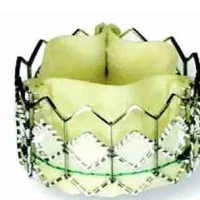According to a study published in JAMA, the prevalence of myocardial scars was nearly 8 percent, of which nearly 80 percent were unrecognised by electrocardiography or clinical evaluation.
While ischaemic heart disease continues to be an important public health concern, a large proportion of MIs remain clinically unrecognised. It is thus important to understand the prevalence, risk factors and prognosis of unrecognised MI.
See also: MRI Provides Insight After Heart Attack
Patients who survive a heart attack have their normal contractlle tissue replaced by noncontractile fibrosis. This myocardial scarring could lead to abnormal heart function and poor prognosis.
During this study, David A. Bluemke, MD, PhD, of the National Institute of Biomedical Imaging and Bioengineering, Bethesda, Md., and colleagues examined the prevalence of myocardial scar using cardiac magnetic resonance. The study participants comprised of multiethnic patients 45 through 84 years of age and who were free of clinical cardiovascular disease at the time of entry into the study. In the 10 year examination, 1840 participants underwent CMR imaging to detect myocardial scar. The researchers also measured their cardiovascular risk factors and coronary artery calcium scores, both at study entry and year 10.
The findings show that myocardial scar was present in 7.9 percent of patients. Prevalence of unrecognised myocardial scar was 6.2 percent while 1.7 percent had clinically recognised MI. 78 percent of myocardial scars remained unrecognised by clinical or ECG evaluation and this prevalence was higher in men (at 12.9 percent) as compared to women (at 2.5 percent). The study also showed that individual risk factors such as age, gender, CAC score, BMI, smoking status and use of antihypertensive medications were also associated with higher odds of myocardial scar.
“The clinical significance of unrecognized myocardial scar remains to be defined, although prior myocardial scar has been noted pathologically in more than 70 percent of patients with sudden cardiac death but without prior known coronary artery disease,” the authors write. “Further studies are needed to understand the clinical consequences of these undetected scars.”
Source: JAMA
Image Credit: Pixabay
Latest Articles
myocardial scarring, myocardial infarction, silent heart attack, unrecognised MI, cardiac magnetic resonance.
According to a study published in JAMA, the the prevalence of myocardial scars was nearly 8 percent, of which nearly 80 percent were unrecognised by electrocardiography or clinical evaluation.










